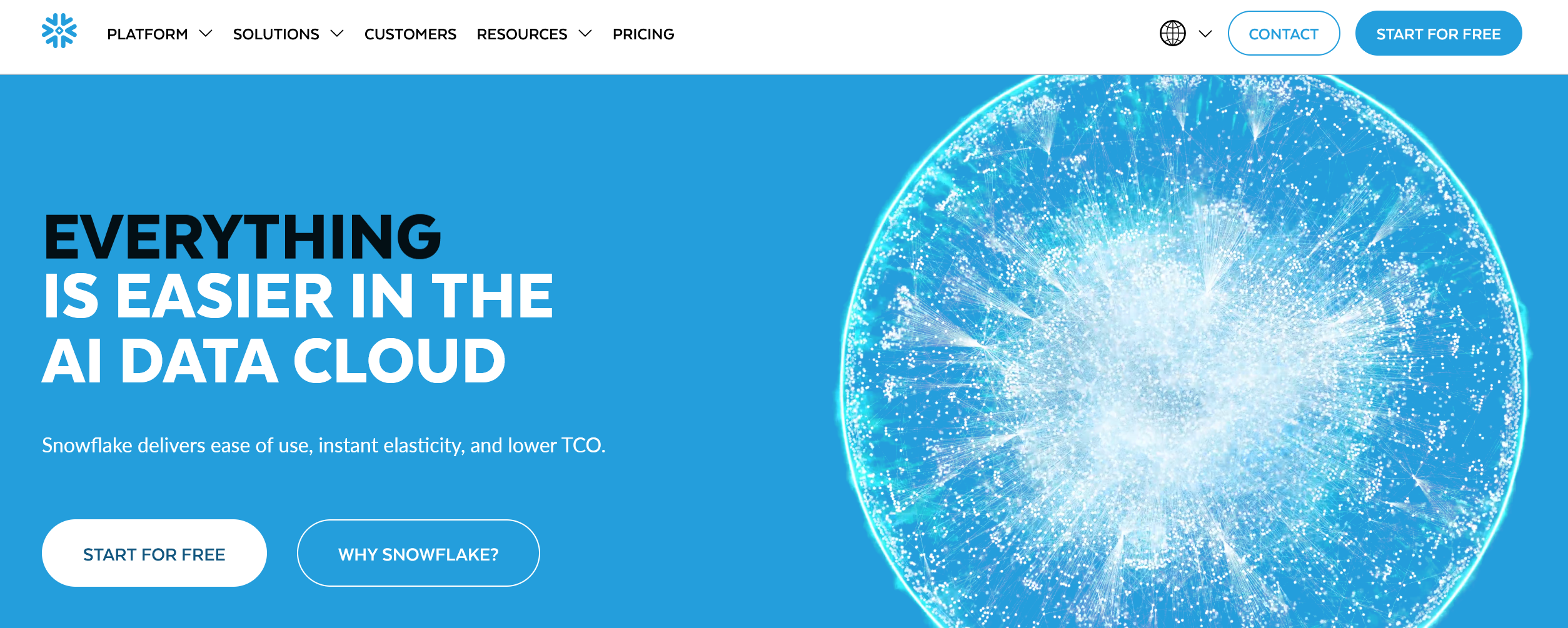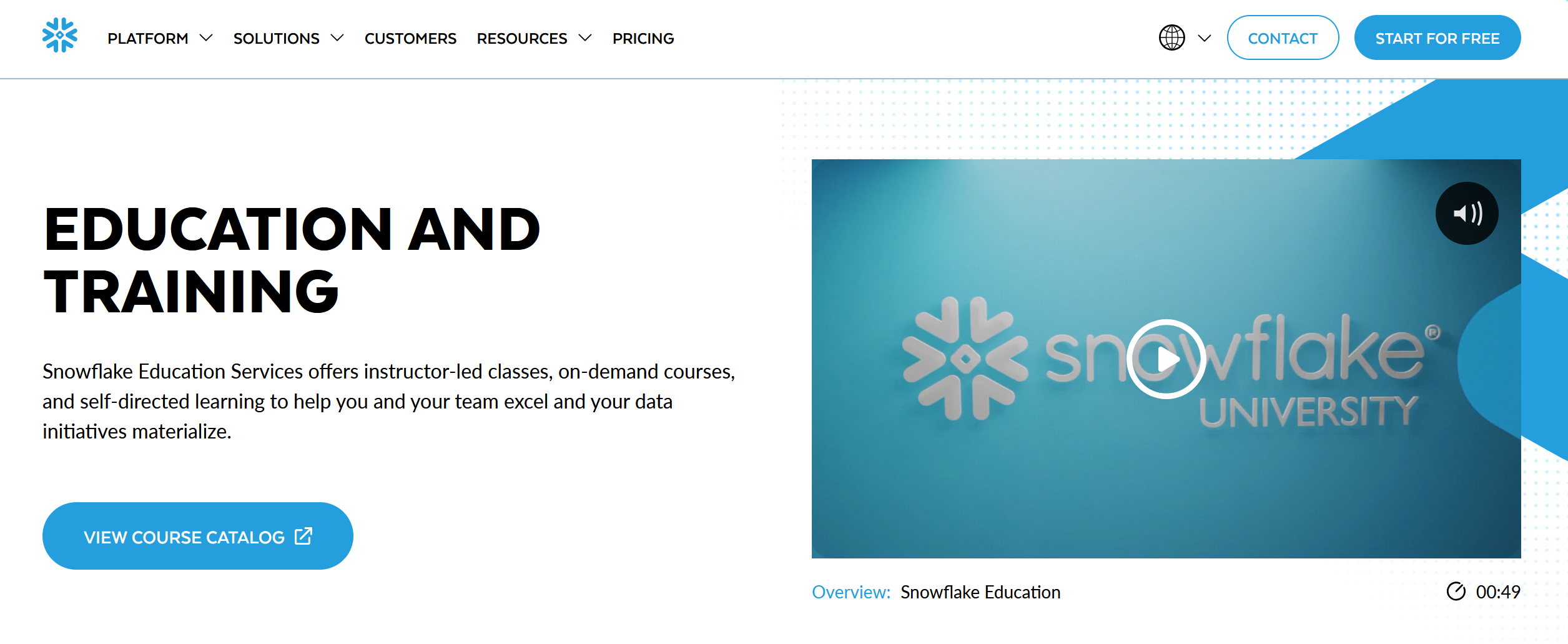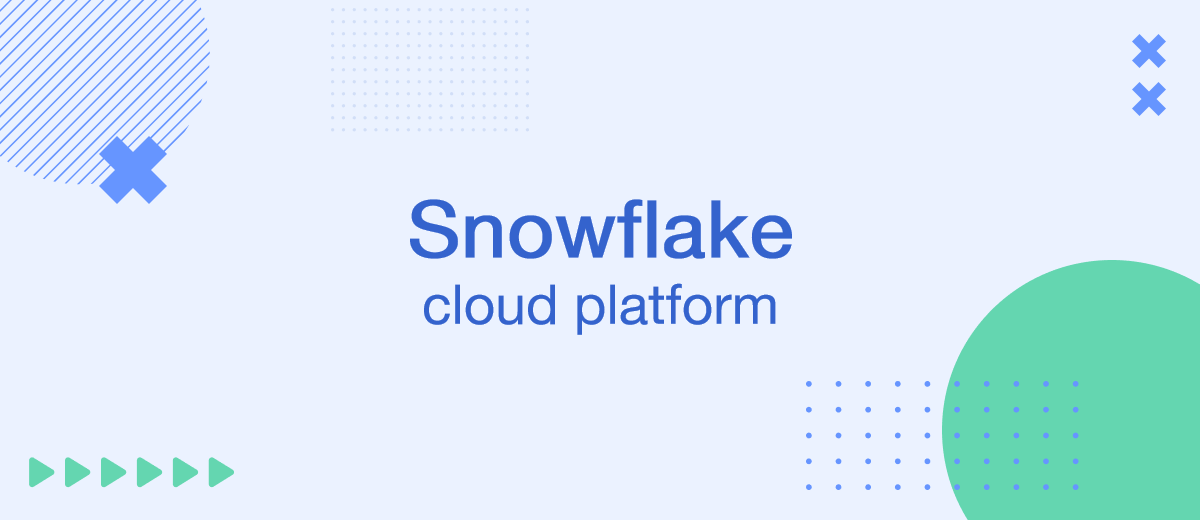Data is a key component of modern business processes, which forces companies to constantly optimize their storage and analytics resources. One of the most popular cloud data warehouses today is the Snowflake platform. In this article, we will talk about its key advantages, features of the Snowflake architecture, application options, and other aspects.
What is Snowflake?
Snowflake is a cloud platform with a set of tools for storing, processing, sharing, integrating and analyzing data. It provides its services based on cloud computing technologies, using the resources of Amazon Web Services, Microsoft Azure and Google Cloud Platform. The Snowflake company was founded in 2012 by a group of IT specialists and venture entrepreneurs. Its founders included Benoît Dageville, Thierry Cruanes and Marcin Żukowski.
In 2014, Bob Muglia, formerly of Microsoft, was appointed CEO of Snowflake. At the same time, the company came out of stealth mode and announced the start of cooperation with AWS. At that time, its services were used by ~80 clients, and in 2024 their number exceeded 10,000. In 2015, the company presented its first product — a cloud-based data platform, which serves as a centralized repository for cloud databases and data lakes, as well as their analytics.
In 2018, Snowflake raised $263 million in funding, raising its valuation to $1.5 billion, making the startup a unicorn. That same year, the company raised another $450 million, increasing its valuation to $3.5 billion. In 2020, Snowflake went through an IPO, which brought it $3.4 billion and became one of the largest IPOs among software companies.

In 2024, the company reported annual revenue of $1.1 billion, demonstrating 106% growth compared to the previous year. At the time of writing, Sridhar Ramaswamy holds the position of CEO of the company, and its number of employees has exceeded 7,000 people. Having told you what is Snowflake data warehouse, let's move on to describing the key advantages of its product.
Core Benefits of Using Snowflake
The platform provides users with numerous significant advantages, the key ones being:
- Scalability. Snowflake scalability enables you to reliably store and quickly process virtually unlimited volumes of data. This benefit is achieved through a single elastic performance engine that underlies the platform. Multi-cluster resource isolation creates a high-performance solution for various use cases. Snowflake efficiently serves complex data pipelines, analytics and engineering software, highly loaded interactive applications, and more.
- Automation. Cloud storage tools help customer companies implement large-scale process automation. Thanks to it, they can flexibly automate data management and maintenance, as well as control over its security, availability, and fault tolerance. With Snowflake resources, businesses increase operational efficiency, optimize costs, and minimize downtime.
- Availability. The platform ensures fast, secure, and accessible transfer of information through seamless cloud and cross-regional connections. It provides access to their centralized storage with compliance and governance policies. Snowflake eliminates the need for ETL and other cloud storage, streamlining collaboration and accelerating decision-making.
- Integrations. Snowflake Data Marketplace provides an extensive catalog of third-party applications available for integration with the platform tools. With its help, users can purchase the data they need for Snowflake data analytics and other formats to work with them. Data sales, optimization of workflows through links with external software, data processing services and other useful features are also available here.
- Security. Snowflake's functionality complies with corporate data protection standards (GDPR, HIPAA, PCI DSS, SOC 1/SOC 2) and includes a wide range of relevant settings. Including lists of allowed and blocked IP addresses, multifactor authentication and automatic 256-bit AES encryption. Access control tools allow you to flexibly monitor and manage user interactions with sensitive data.
Snowflake's Architecture Explained
The hybrid multi-cluster Snowflake data architecture combines the properties of traditional shared-disk and shared-nothing architectures. Like the former, it uses a central repository to store persistent data, accessible by all computing nodes in the platform. Like the latter, it processes queries through MPP (massively parallel processing) computing clusters, with each node storing a portion of the dataset locally.
The combined approach provides the simplicity of data management inherent in shared-disk models with the performance and scalability of shared-nothing architectures. The technology used by Snowflake provides the optimal set of I/O, CPU, and memory resources for the user's required workload and use case.
The Snowflake data warehouse architecture contains three key layers:
- Storage. The scalable cloud storage service centrally manages all parameters of stored data: organization, file size, structure, compression, metadata, statistics, and other aspects. Clients access objects stored in it through SQL queries. The system provides a high degree of replication, scalability, and availability without the need for manual configuration.
- Computing. Snowflake's standalone massively parallel processing (MPP) clusters distribute compute resources to load, transform, and query data. This allows users to isolate workloads into their chosen virtual warehouses and work on their databases without impacting the performance of other clusters.
- Cloud services. These services integrate different platform components to handle user actions, from logging in to submitting queries. They are also used for compute instances provided to Snowflake by a cloud service provider (AWS, Azure, Google Cloud). Services available at this level include authentication, infrastructure management, metadata management, query parsing and optimization, and access control.
Key Use Cases for Snowflake
The tools for storing, processing and analyzing data provided by the Snowflake data warehouse have many areas of application. The main ones include:
Autoload Data
The platform offers a built-in solution for continuous data ingestion, the Snowpipe service. Its auto-capture and cloud provider notification features ensure stable and consistent data loading into tables. It allows companies to efficiently automate the addition of data from external storage (S3, Azure Blob, etc.) as it becomes available.
Machine Learning
Analysts and data scientists can create, train, and deploy ML models based on the platform ecosystem. Snowflake tools can load, transform, and manage large data sets, and can be integrated with machine learning libraries (TensorFlow, PyTorch). Support for popular programming languages (Python, R, Java, C++) and direct integration with Apache Spark simplify data preparation and optimize ML algorithm development processes.
Analytics and BI
Snowflake cloud data warehouse enables companies to generate valuable insights based on the data they store and process. For these purposes, they can use advanced analytics and interactive reporting tools. An additional advantage is the compatibility of the platform's native functionality with popular business intelligence systems (QuickSight, Looker, Power BI and Tableau).
Data Exchange and Collaboration
Snowflake Marketplace enables users to easily, quickly, and securely share data and tools to work with it. The centralized platform provides access to a vast array of resources, including data services, datasets, and other components. All resources published on the platform are pre-moderated, which ensures that they meet corporate quality and security standards. The Marketplace helps users easily find the materials they need by choosing the most relevant offers from an extensive catalog.
How to Get Started with Snowflake

Snowflake data warehouse offers new users the opportunity to test all the platform's capabilities absolutely free, thanks to a 30-day trial.
To achieve this, you need to perform the following sequence of actions:
- Go to the official site of Snowflake platform and register an account, indicating your personal information, the name, and email of your company, your position, and country of residence.
- Select the desired tariff plan (Standard, Enterprise, Business Critical), cloud service provider (Amazon Web Services, Microsoft Azure, Google Cloud) and region, and enter a phone number.
- Activate your account by clicking on the link in the email that will be sent to the email address you specified during registration.
- Log in to your account by entering your unique account ID or account URL. The relevant details can be found in the activation email.
Also, new users should pay attention to such resources and features:
- Documentation. The centralized knowledge base contains many articles with information about the platform and its components. All of them are organized by thematic sections: Getting Started, User Guides, Developer Guides, Reference, Tutorials, Releases, What's New, Announcements, etc.
- Integration ecosystem. This section contains a list of third-party systems and technologies that support certified integration with the platform. It includes services and solutions for data exchange and processing, business analytics, machine learning, and much more. If you need to set up a connection with tools outside the Snowflake ecosystem, you can use multifunctional JDBC/ODBC drivers.
- Pricing. The platform offers a flexible pricing model with several tariff plans: Standard, Enterprise, Business Critical, Virtual Private Snowflake. The cost of services is calculated based on the selected plan, cloud provider and region.
- Training. Snowflake Education Services enables users to master the platform's tools at a professional level. There are various courses available with certificates awarded upon completion, as well as classes with certified instructors and self-study materials.
Conclusion
The Snowflake cloud platform is in high demand among thousands of companies that need powerful, stable and high-speed resources for storing and working with data. Its tools provide users with numerous benefits, the most important of which are scalability, automation, security, availability and an extensive ecosystem of integrations. Snowflake is used not only for data storage, but is also ideal for solving specialized problems in the field of business analytics, machine learning and many other areas.
Would you like your employees to receive real-time data on new Facebook leads, and automatically send a welcome email or SMS to users who have responded to your social media ad? All this and more can be implemented using the SaveMyLeads system. Connect the necessary services to your Facebook advertising account and automate data transfer and routine work. Let your employees focus on what really matters, rather than wasting time manually transferring data or sending out template emails.
